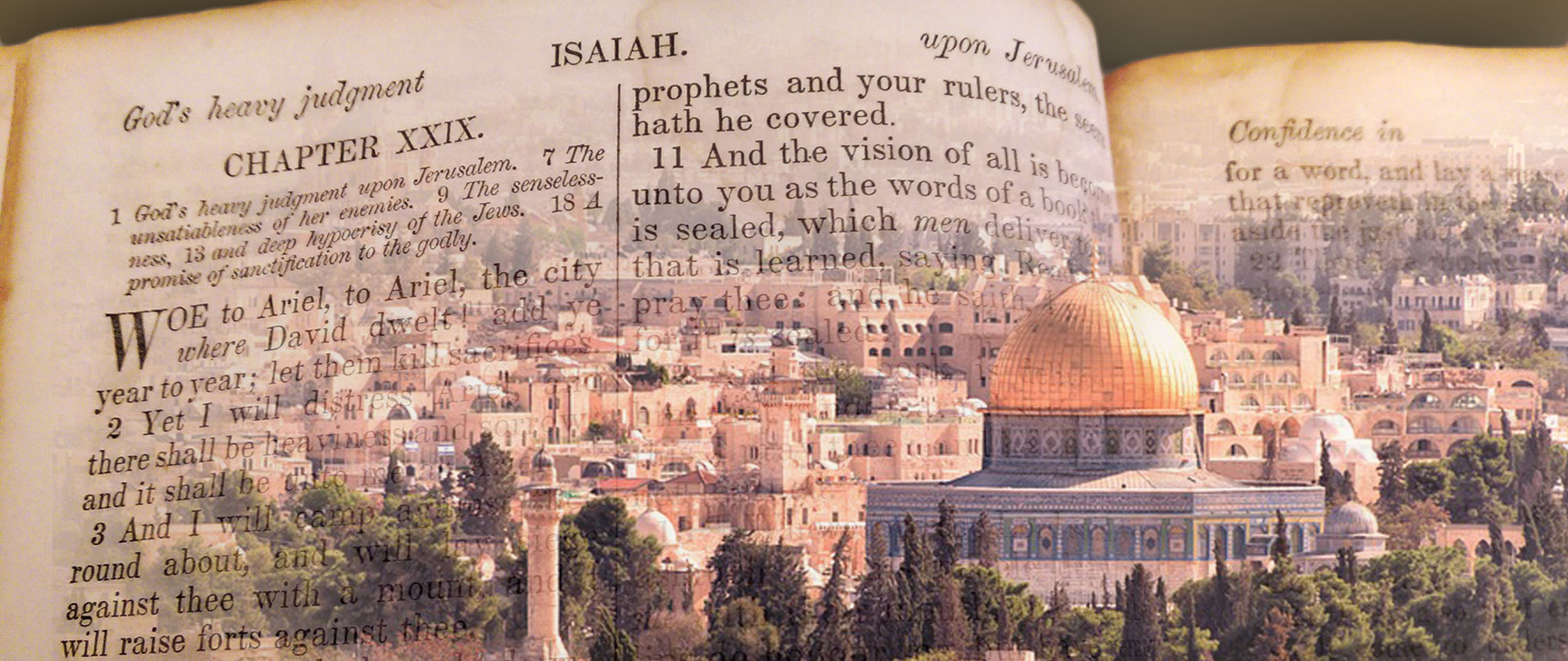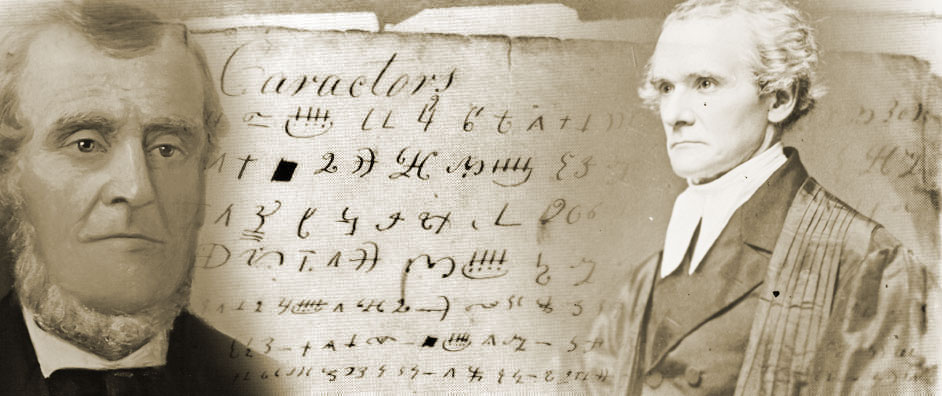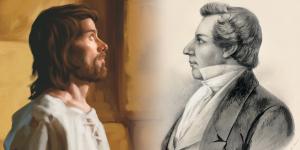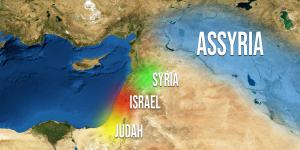You are here
Why Does Nephi Use Isaiah 29 as Part of His Own Prophecy?

2 Nephi 26:16; cf. Isaiah 29:4
The Know
According to Robert A. Cloward, “In the doctrinal and devotional writings of this dispensation, no chapter of Isaiah is more often cited” than Isaiah 29.1 The precedent was set by the Lord himself in 1820, when he paraphrased Isaiah 29:13 while telling Joseph Smith that none of the churches available at the time were true (see Joseph Smith—History 1:19). Many centuries earlier, however, the prophet Nephi linked Isaiah 29 to this dispensation by using several phrases and sometimes long blocks of text from Isaiah 29 and likening them to Joseph Smith and the restoration.
Isaiah 29 permeates Nephi’s writings, especially 2 Nephi 25–30.2 What is curious about Nephi’s use of Isaiah 29 is that he never outright quotes this chapter, like he does with Isaiah 48–49 (1 Nephi 21–22) and Isaiah 2–14 (2 Nephi 12–24). Instead, he makes frequent use of Isaiah 29 as part of his “own prophecy” wherein he spoke “somewhat concerning” the words of Isaiah he had just copied from the plates of brass (2 Nephi 25:1, 7).
This has led a number of LDS scholars to the conclusion that Nephi is not actually quoting Isaiah 29 verbatim in 2 Nephi 27. Rather, Nephi is using Isaiah’s verbiage—and expanding on it—to express his own prophecy. “In his ‘own prophecy,’ Nephi uses many words and themes … from other chapters of Isaiah, including words that sound like Isaiah 29,” Cloward observed. “He attributes none of these to Isaiah. In fact, he repeatedly claims the words are his own or attributes them to the Lord.”3
Nephi had seen the Restoration and coming forth the Book of Mormon in vision (1 Nephi 13:32–42). When Nephi read about “a book that is sealed,” taken by men to “one that is learned, saying, Read this, I pray thee,” and then subsequently taken to “him that is not learned” (Isaiah 29:11–12), he found apt words to adopt in describing certain events which would unfold in the life of Joseph Smith (2 Nephi 27:15–19).
Isaiah’s description of “speech … whisper[ing] out of the dust” with a “familiar spirit” naturally reminded Nephi that the book he saw would come up out of the ground, carrying a spirit that resonates in the hearts of truth seekers everywhere (Isaiah 29:4; cf. 2 Nephi 26:16). Its powerful message would penetrate the hearts of those who were spiritually “deaf” and “blind” and lead their souls “out of obscurity, and out of darkness” (Isaiah 29:18; cf. 2 Nephi 27:29).
In Isaiah, Cloward explained, the sealed book is symbolic. “No specific book is mentioned” by Isaiah, whose “concern was the lost vision of his people, not books. … Isaiah’s symbolic sealed book is still sealed today.”4 But Nephi’s sealed book is real, and it has come forth in the latter-days.
It was Nephi who made Isaiah’s symbolic book into a literal book. Nephi likened the symbolic book in Isaiah’s simile to a literal, specific record the Lord had commanded him to write on gold plates. Nephi also foretold the latter-day role of his record in restoring vision, understanding, and doctrine to the house of Israel.5
There are both ancient and modern precedents for this kind of practice. Brant A. Gardner has suggested that this is akin to the later Jewish concept of pesher, an interpretive commentary on scripture that was believed to be inspired, attested in the Dead Sea Scrolls and other ancient sources.6 In more contemporary times, when Elder Bruce R. McConkie bore his final testimony, he insisted, “I shall use my own words, though you may think they are the words of scripture.”7
The Why
The understanding that Isaiah 29 and 2 Nephi 27 are distinct and separate prophecies has several implications. First, it clarifies the interpretation of Isaiah 29 in context, as a prophecy about the fall and restoration of Jerusalem, specifically.8
Second, instead of assuming that Nephi is giving a more accurate version of Isaiah 29, the expansions and rewordings can be understood as Nephi’s adaptations to what he saw in vision. Nephi recognized Isaiah’s words as suitable for describing his vision, but not necessarily perfect. So, as he adapted Isaiah’s words, he made expansions and emendations as he saw fit to reflect more accurately the future events he witnessed. This also means there is no need to expect more ancient manuscripts of the Isaiah text to confirm any of Nephi’s changes.
Third, if Cloward is correct, this means that it was Nephi’s prophecy, not Isaiah’s, that was fulfilled with Martin Harris’s visit to Charles Anthon and other scholars.9 The attribution of these events as a fulfillment of Isaiah 29 began with Joseph Smith and Martin Harris themselves. However, 2 Nephi 27 was not translated until a year after these events transpired, so it is not surprising that they would apply Isaiah 29 to these events instead.10
Finally, this provides yet another glimpse into the process of “likening.”11 This time, however, Nephi’s likening is different. Instead of direct quoting, followed by application, Nephi is actively applying Isaiah’s words while quoting them by adapting them to his prophetic vision. Furthermore, with the Joseph Smith Translation of Isaiah 29, there is yet another layer of likening, this time from a modern-day prophet.
Specifically regarding the JST Isaiah 29, Cloward noticed, “the Prophet confirmed that KJV Isaiah 29 and 2 Nephi 26–27 are different and independent texts. He consciously used part of each.”12 By doing so, “Joseph Smith chose to give the inspired translation of two-thirds of Isaiah 29 an application more apropos to the latter days. By copying Nephi’s words into the JST from verse 8 to the end, Joseph Smith likened Isaiah 29 to his own dispensation.”13
From Isaiah to Nephi to Joseph Smith, the words of Isaiah 29 have taken on new and relevant meanings for different times and places.14 “In this process, Isaiah’s sealed book was reinterpreted as Nephi’s gold plates and as Joseph Smith’s Book of Mormon. Isaiah’s dust of death was reinterpreted as Nephi’s source of renewed life and as Joseph Smith’s Cumorah. … This is the process of likening. Prophets do it readily. Students of the scriptures are urged to liken as well. … As readers do this, the Lord can reveal new truths to them and enlarge their understanding.”15
Further Reading
Brant A. Gardner, Second Witness: Analytical and Contextual Commentary on the Book of Mormon, 6 vols. (Salt Lake City, UT: Greg Kofford Books, 2007–2008), 2:360–365, 377–397.
Robert A. Cloward, “Isaiah 29 and the Book of Mormon,” in Isaiah in the Book of Mormon, ed. Donald W. Parry and John W. Welch (Provo, UT: FARMS, 1998), 191–247.
- 1. Robert A. Cloward, “Isaiah 29 and the Book of Mormon,” in Isaiah in the Book of Mormon, ed. Donald W. Parry and John W. Welch (Provo, UT: FARMS, 1998), 191.
- 2. Language from Isaiah 29 can also be found in 1 Nephi 14:7; 22:8 (Isaiah 29:14), 2 Nephi 6:15 (Isaiah 29:6), and several places in 2 Nephi 26–28. See John W. Welch and Gregory J. Welch, Charting the Book of Mormon: Visual Aids for Personal Study and Teaching (Provo, UT: FARMS, 1999), 97. See Cloward, “Isaiah 29 and the Book of Mormon,” 204–217 for identification and analysis of all the different allusions to Isaiah 29 in 2 Nephi 25–30.
- 3. Cloward, “Isaiah 29 and the Book of Mormon,” 202. For examples of other scholars taking this view, see the works mentioned in John S. Thompson and Eric Smith, “Isaiah and the Latter-day Saints: A Bibliographic Survey,” in Isaiah in the Book of Mormon, 455, 472, 479, and 490. The earliest example is from 1955. Also see Brant A. Gardner, Second Witness: Analytical and Contextual Commentary on the Book of Mormon, 6 vols. (Salt Lake City, UT: Greg Kofford Books, 2007–2008), 2:360–365 (commenting on 2 Nephi 26:15–16), and 376–397 (commenting on 2 Nephi 27).
- 4. Cloward, “Isaiah 29 and the Book of Mormon,” 200.
- 5. Cloward, “Isaiah 29 and the Book of Mormon,” 201.
- 6. Gardner, Second Witness, 2:377. For more background on pesher, see David J. Larsen, “Exegete as Prophet? The Case of the Interpretation of the Psalms at Qumran,” presentation given at the Dead Sea Scrolls Conference, hosted by The Leonardo, Salt Lake City, April 11–12, 2014; published proceedings forthcoming.
- 7. He continued on to say, “True it is they were first proclaimed by others, but they are now mine,” because “the Holy Spirit of God has borne witness to me that they are true.” Elder Bruce R. McConkie, “The Purifying Power of Gethsemane,” Ensign (May 1985); online at lds.org
- 8. See Cloward, “Isaiah 29 and the Book of Mormon,” 192–201
- 9. For the history of this visit, see Michael Hubbard McKay and Gerrit J. Dirkmaat, From Darkness unto Light: Joseph Smith’s Translation and Publication of the Book of Mormon (Salt Lake City and Provo, UT: Deseret Book and Religious Studies Center, Brigham Young University, 2015), 39–59; Richard E. Bennett, “Martin Harris’s 1828 Visit to Luther Bradish, Charles Anthon, and Samuel Mitchill,” in The Coming Forth of the Book of Mormon: A Marvelous Work and a Wonder, ed. Dennis L. Largey, Andrew H. Hedges, John Hilton III, and Kerry Hull (Salt Lake City and Provo, UT: Deseret Book and Religious Studies Center, Brigham Young University, 2015), 103–115.
- 10. See discussion in Cloward, “Isaiah 29 and the Book of Mormon,” 223–226.
- 11. Book of Mormon Central, “How Might Isaiah 48–49 be ‘Likened’ to Lehi’s Family? (1 Nephi 19:23),” KnoWhy 23 (February 1, 2016);
- 12. Cloward, “Isaiah 29 and the Book of Mormon,” 232. Cloward further reasoned, “If he had understood the Book of Mormon to preserve a more complete and correct text of Isaiah 29 from the brass plates, he would likely have substituted for chapter 29 all of the Book of Mormon version,” which he did not do. In fact, “He retained all the references to Jerusalem in the first seven verses. If he had understood Isaiah to prophesy that the Nephites and Lamanites would be brought down and would ‘speak out of the ground’ and ‘whisper out of the dust,’ we would likely have copied 2 Nephi 26:15–16 in the JST” (p. 232).
- 13. Cloward, “Isaiah 29 and the Book of Mormon,” 233.
- 14. As Cloward puts it, “Isaiah foresaw both the fate and the future restoration of Jerusalem and her people. Nephi … likened Isaiah’s words to his people in a new prophecy, showing how Nephite writings would advance the Lord’s work in the latter days. … Joseph Smith, in turn, replaced Isaiah’s words in his inspired translation of the Bible with his new understanding of how they had been likened to him and to the Lord’s latter-day work.” Cloward, “Isaiah 29 and the Book of Mormon,” 233.
- 15. Cloward, “Isaiah 29 and the Book of Mormon,” 233–234.
KnoWhy Citation
Related KnoWhys
Subscribe
Get the latest updates on Book of Mormon topics and research for free








